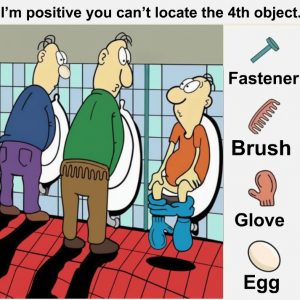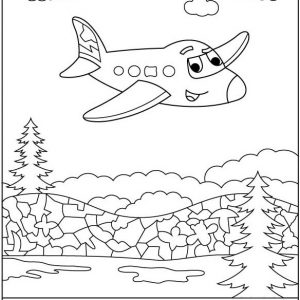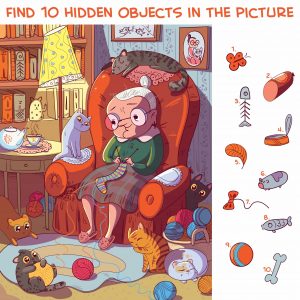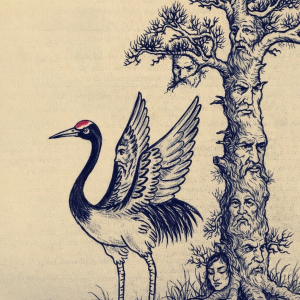Unlock the Hidden Adventure: Find the Baseball Cap, Fish, Flower, and Butterfly in a Charming Campsite Scene
Dive into the World of Hidden-Object Puzzles and Outdoor Fun
Have you ever paused over a black-and-white illustration of a girl flying kites near a tent and felt drawn into its details? That winding path, the leafy tree, the smiling sun, and the camping setup invite you to linger—but there’s more. Tucked within this nature-themed drawing lie four elusive items: a baseball cap, a fish, a flower, and a butterfly. In this article, we’ll explore why hidden-object puzzles like this captivate us, share smart strategies to spot every item, discuss the cognitive and emotional perks of engaging with such scenes, and offer tips to craft your own nature-inspired puzzles. Ready for a playful hunt under the treetop? Let’s set off!

Why Nature-Themed Hidden-Object Puzzles Engage Us
Ever wonder why we can’t resist scanning a scene for cleverly concealed treasures? When an illustration features a girl camping by a winding creek, surrounded by trees and kites caught in branches, our curiosity ignites. Nature-themed puzzles tap into our innate love of exploration: we feel like little adventurers on a treasure hunt in the wild. This sense of discovery triggers a mini dopamine rush—each find rewards our brain, motivating us to keep searching. Plus, combining outdoor imagery (tents, trees, flowers) with the challenge of hidden items blends relaxation with mental stimulation. It’s like hiking a forest trail: you admire the scenery while scanning the underbrush for interesting mushrooms or butterflies. By weaving the thrill of a campsite setting with a brain-teasing puzzle, content creators hook readers and encourage them to stay engaged longer.
Exploring the Campsite Scene: Setting the Stage for Discovery
Imagine this illustration: a cheerful girl stands by a sturdy tree, holding kite strings. Two kites with smiling faces dangle among leafy branches. Behind her, a cozy tent sits near a curving path that disappears into a forest of pines. Delicate wildflowers dot the meadow, and the sun peers through leaves, grinning at the scene. On the horizon, gentle hills hint at more to explore. At first glance, you notice the obvious: the tent, the kites, the girl’s excited expression. But hidden within this scene are four items we need to uncover: a baseball cap, a fish, a flower (beyond the obvious blooms), and a butterfly. Treat this like a micro camping expedition: you study every nook—under leaves, near the stream, even in the clouds. As you examine textures and shapes, you sharpen your focus and unlock the puzzle’s secrets.

Spotting the Baseball Cap: Searching Unlikely Places
A baseball cap seems straightforward, yet in a nature sketch it won’t simply lie on the ground. Instead, puzzle designers tuck its silhouette into unexpected spots. Could the cap’s curved brim mimic the shape of a tent flap or a leafy branch arch? Maybe the cap hides in negative space between tree limbs or aligns with a rock outline near the path. To spot it, start by scanning areas with smooth, rounded curves. Tilt your head slightly and view the scene from different angles—sometimes a familiar shape emerges when you change perspective. Think of it like noticing a cloud that looks like a hat: your brain pieces together subtle arcs and shadows to reveal the hidden cap. Keep your eyes moving: that baseball cap might be camouflaged among leaves or sketched in the crease of the tent’s fabric. Once you spot that brim, celebrate—the thrill of discovery feels like finding a lost camping hat in tall grass!
Finding the Fish: Following the Imaginary Stream
Though no explicit water body draws immediate attention, the winding path suggests a nearby creek or stream. That’s our clue: the fish likely conceals itself near imagined water. Look for sinuous lines or shapes resembling fish fins tucked into foliage patterns. Maybe the fish silhouette lies within the curve of a leaf or the contour of the path’s edge. Use the “outline trick”: trace potential shapes with your finger or cursor to see if they resolve into a fish profile. Sometimes artists embed the fish in negative spaces: two leaves forming a fish head and tail, or a pattern of grass blades suggesting scales. By mentally envisioning a hidden pond, you direct your search toward aquatic shapes. Once you detect that subtle fish outline, you’ll feel like you’ve discovered a secret creek teeming with life—proof that attentive observation rewards persistence.

Discovering the Flower: Beyond the Obvious Blooms
At first, you spot several straightforward flowers sprinkled across the meadow. But the hidden flower challenge asks for one extra bloom tucked into the scene. Perhaps its petals emerge from a cluster of leaves, or its shape echoes a cloud silhouette. To find it, compare obvious flowers’ shapes and sizes, then hunt for a similar motif in an unexpected location: near the tent flap, on the tree trunk’s bark patterns, or even disguised within the kite string bows. Shift your focus between foreground and background: that hidden blossom might be etched lightly on the distant hills or drawn into the pattern of branches. Use a two-pass scan: first note all visible flowers, then revisit areas where petal-like forms lurk. This layered search resembles foraging for mushrooms: you know the general shape, but you must peer under leaves and logs to catch that subtle cap. Spotting the extra flower rewards your patience, deepening engagement with the illustration.
Uncovering the Butterfly: Watching for Fluttering Silhouettes
Butterflies blend into natural backgrounds with delicate wings and subtle patterns. In our campsite drawing, the butterfly’s outline might nestle among tree leaves or near tall grass. To reveal it, seek symmetrical shapes: two wings meeting at a central body line. Sometimes the artist draws a negative-space butterfly—gaps between branches or flowers forming wing-like shapes. Try squinting or softening your gaze: this downplays fine details and highlights broader forms, so wing outlines stand out. Consider where a butterfly might perch: near flowers or sunlit clearings. Even if the scene lacks explicit flowers near the suspected hiding spot, imagine the butterfly’s favorite spots and inspect those areas closely. Once you pinpoint that fluttering silhouette, you’ll experience the delight of a butterfly landing gently on your shoulder—a moment of wonder sparked by careful observation.

Cognitive and Emotional Benefits of Hidden-Object Nature Puzzles
Engaging with this campsite illustration yields more than momentary fun: it strengthens mental skills and fosters emotional well-being. First, you sharpen attention to detail: training your eyes to detect subtle shapes helps in daily tasks, from reading fine print to noticing safety hazards. Second, you boost visual memory: recalling which areas you’ve scanned prevents redundant searches and enhances spatial awareness. Third, you cultivate patience and perseverance: when the baseball cap or fish remains elusive, you learn to stick with the task rather than give up—an attitude that transfers to real-life challenges. Fourth, immersing yourself in a nature-themed puzzle promotes mindfulness: focusing on the scene quiets distracting thoughts, offering a mini mental retreat akin to a real camping getaway. Finally, sharing the puzzle hunt with friends or family fosters social bonding: exchanging hints or celebrating discoveries creates joyful connections. By highlighting these benefits, you encourage readers to embrace hidden-object puzzles as more than games—they’re exercises that enhance focus, resilience, and relaxation.
Creating Your Own Outdoor Hidden-Object Adventures
Feeling inspired? You can design custom puzzles for kids’ activities, classroom lessons, or social media engagement. Start with a nature scene: draw or photograph a campsite, forest path, or garden. Decide on four to six items to hide—mix familiar shapes (like a cap, fish, flower, butterfly) with themed objects (a compass, lantern, acorn, bird). Sketch or edit the scene so these shapes blend into branches, trails, or shadows. Balance difficulty: include some easy-to-find items (for quick wins) and some subtle hides (for deeper engagement). Test with friends or kids: note which shapes they locate quickly and which remain hidden, then tweak accordingly. Present the puzzle with a playful prompt (“Can you spot the hidden compass and squirrel?”). Offer hints later to sustain interest. This DIY approach not only entertains but also builds your reputation as a creative educator or content creator. Plus, you’ll reinforce SEO by publishing posts titled “DIY nature hidden-object puzzles” or “Camping-themed brain teasers for kids.”

Integrating Hidden-Object Puzzles into Learning and Play
Hidden-object nature puzzles fit seamlessly into educational and leisure contexts. Teachers can use them to sharpen observation skills before science lessons about ecosystems: after finding the fish, discuss real aquatic habitats. Librarians can host puzzle afternoons where families solve nature-themed illustrations, then read books about camping or wildlife. Parents can print puzzles for quiet screen-free time on rainy days or long car rides en route to a camping trip. Outdoor clubs might use printed puzzles to guide scavenger hunts: after solving the illustration indoors, participants search real environments for similar shapes—a cap hung on a branch, a butterfly in a garden. Digital content creators can embed interactive puzzles on websites or social platforms, inviting followers to comment their find time or share screenshots highlighting hidden items. By weaving these puzzles into varied activities, you maximize engagement, learning, and enjoyment.
SEO Tips for Publishing Hidden-Object Puzzle Content
To ensure your nature-themed puzzle article outranks competitors, integrate targeted keywords naturally: “hidden-object camping puzzle,” “nature-themed brain teasers,” “kids observation activities,” “DIY hidden-object game,” “improve attention with puzzles.” Craft engaging headings (bolded in Markdown) that include these phrases. Use conversational tone and personal pronouns: speak directly to readers (“Have you tried scanning a nature scene for hidden treasures?”). Incorporate analogies (“like hunting for treasure in the woods”) and rhetorical questions to keep content lively. Interweave user benefits: mention cognitive gains, mindfulness perks, and social fun. Embed a clear call-to-action: invite readers to download a printable version or share their puzzle solutions on social media. Link internally to related posts (e.g., “5 Outdoor Games to Boost Kids’ Focus”) and externally to authoritative resources on child development or nature education. Alt-text for the image could read: “Black-and-white campsite illustration with hidden baseball cap, fish, flower, and butterfly puzzle.” This holistic SEO approach enhances visibility and drives organic traffic.
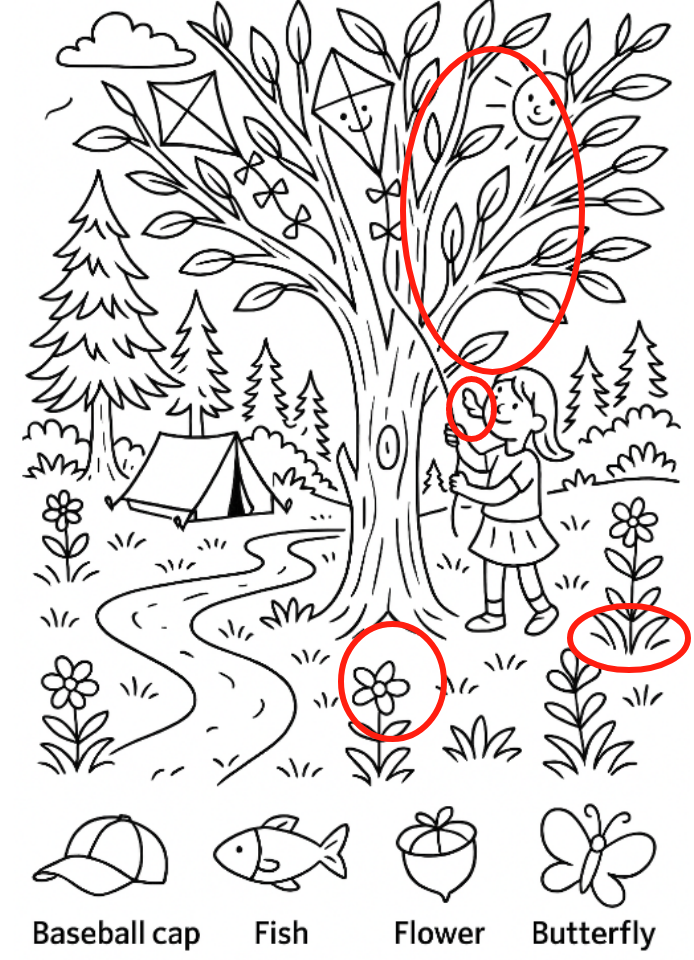
Conclusion: Celebrate Curiosity and the Joy of Discovery
This enchanting campsite illustration—with a girl flying kites by a tent, trees whispering overhead, and hidden treasures awaiting discovery—invites us to slow down, observe, and delight in small surprises. By hunting for a baseball cap, fish, flower, and butterfly tucked into leaves, folds, and negative spaces, we sharpen our mental skills, find a moment of mindfulness, and share playful moments with others. Beyond this single puzzle, the lesson extends: curiosity transforms everyday scenes into adventures. So next time you spot an illustration or wander outdoors, ask yourself: “What’s hiding just out of plain sight?” Embrace that inner explorer, and you’ll uncover hidden wonders everywhere. Happy hunting!


